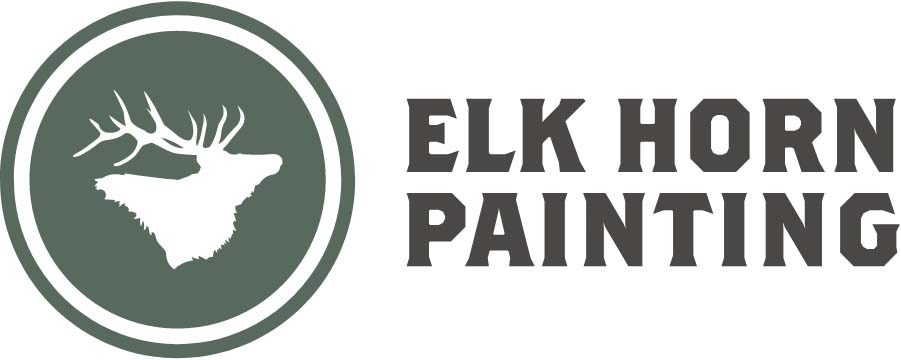Enhance your curb appeal and protect your fence with expert painting services designed to last.
Fence Painting
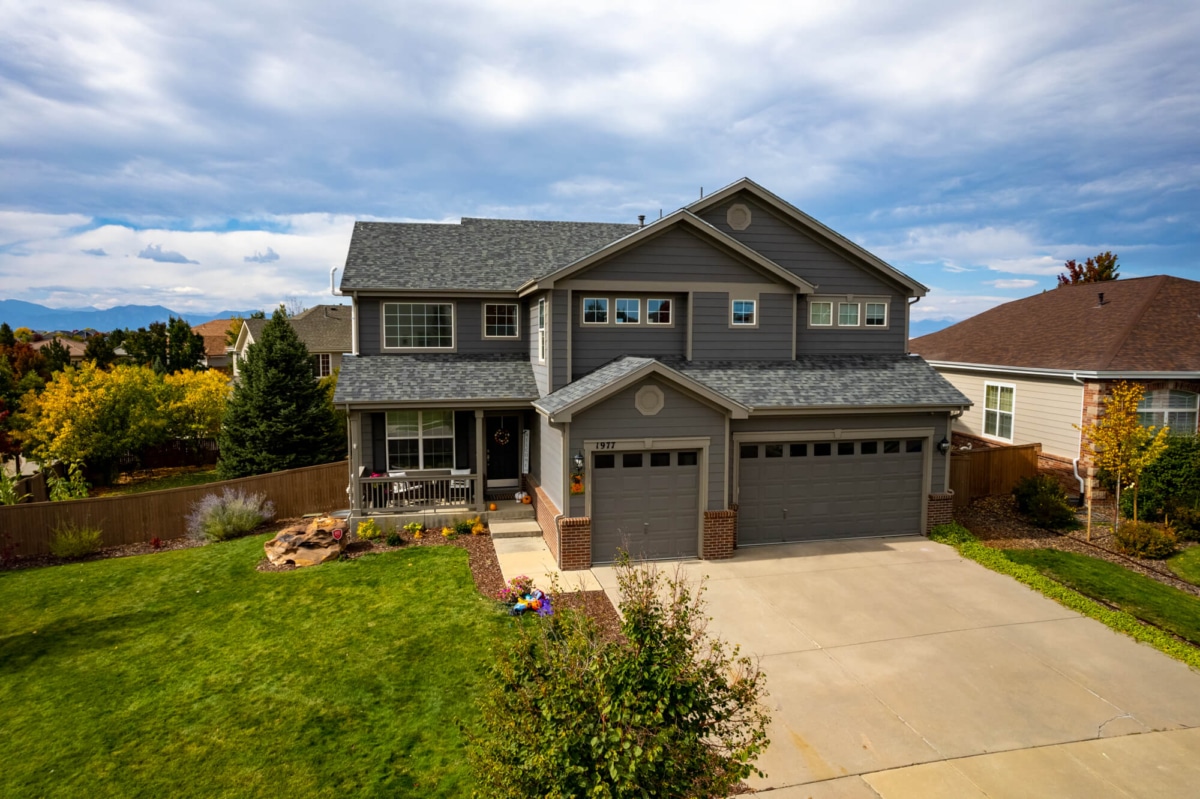
By submitting this form, you agree to receive communications per our privacy policy.
A well-painted fence can be the difference between a drab yard and a vibrant outdoor oasis. Investing in fence painting not only enhances your property’s curb appeal, but it also protects your investment against nature’s elements.
Understanding the nuances of fence painting is crucial for maintaining both its aesthetic and structural integrity. From selecting the right colors to ensuring proper surface preparation, each step plays a vital role in achieving a long-lasting finish.
This guide delves into everything you need to know about fence painting, including tips, techniques, and professional insights that can elevate your fencing from ordinary to extraordinary.
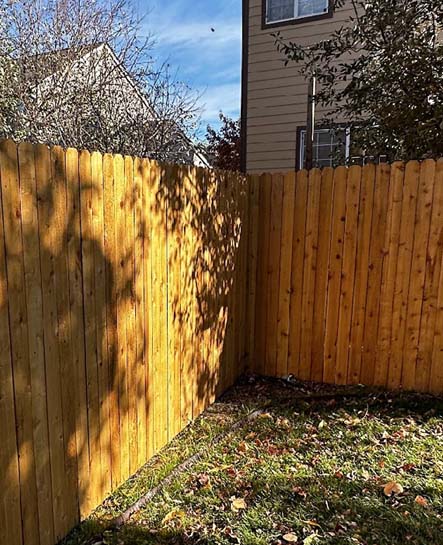
What Is Fence Painting and Why Is It Important?
Fence painting is the process of applying a protective coat of paint to wooden or metal fences, serving both aesthetic and functional purposes. A professionally painted fence enhances curb appeal, complements property design, and increases property value. Functionally, paint provides a durable barrier against weather damage, preventing issues like rot, rust, and deterioration.
According to industry data, regular fence painting and maintenance can extend a fence’s lifespan by up to 50%. Regional climate and material type are key considerations. Waterproof paints are essential in humid climates to prevent moisture damage, while UV-resistant paints are ideal for areas with intense sunlight. Using the right type of paint for wood or metal ensures lasting protection and durability.
Investing in professional fence painting services saves time and reduces the risk of costly repairs. With proper application, a painted fence not only delivers immediate visual appeal but also long-term benefits of fence painting, including enhanced protection and an extended lifespan for your fence.
Typical Colors for Fence Painting:
Choosing the Perfect Shade
When it comes to painting fences, knowing the type of wood is key to achieving long-lasting results. Common woods include cedar, pine, and redwood, each with its own traits.
Cedar: Naturally resistant to decay, cedar is ideal for painting. Its smooth surface enhances paint adhesion, making it a popular choice.
Pine: Pine is economical but needs a primer for better adhesion. It’s crucial to seal knots to prevent resin from bleeding through the paint.
Redwood: Highly durable and resistant to weather, redwood offers a rich color and smooth finish. Proper sealing enhances its natural beauty.
Treated vs. Untreated Wood: Treated wood resists insects and rot but may affect paint adhesion. It’s essential to let it dry for a period of time before painting. Untreated wood needs a protective coat to guard against the elements.
Paint and Stain Recommendations: For lasting durability and curb appeal, consider paints or stains with mildew resistance. Eco-friendly options, such as low-VOC paints, ensure sustainability without sacrificing quality.
Surface Preparation:
How to Get Your Fence Ready for Painting
Surface preparation is crucial for a successful fence painting project. Proper steps ensure the paint adheres well and lasts a long time. Here’s a step-by-step guide:
- Cleaning: Start by removing dirt and grime using a power washer or a garden hose. A wire brush can help tackle stubborn spots.
- Sanding: Smooth out any rough or uneven surfaces with an orbital sander. This step is vital for removing old, peeling paint and preparing the wood for a fresh coat.
- Repairing: Inspect the fence for any damage. Use wood filler to mend cracks or holes. Ensure fence posts are sturdy and replace them if needed.
- Priming: Applying a quality primer is essential. Primers help seal the wood, prevent mold, and promote proper paint adhesion.
Tools Used
- Power Washer: For deep cleaning.
- Orbital Sander: Ensures smooth surfaces.
- Wire Brush & Wood Filler: For repairs.
Challenges
Issues like mold, peeling paint, or rough surfaces can complicate the preparation process. Address these by cleaning thoroughly, sanding well, and applying primer evenly.
By following these steps, your fence will be ready for painting and will maintain its curb appeal for a longer period.
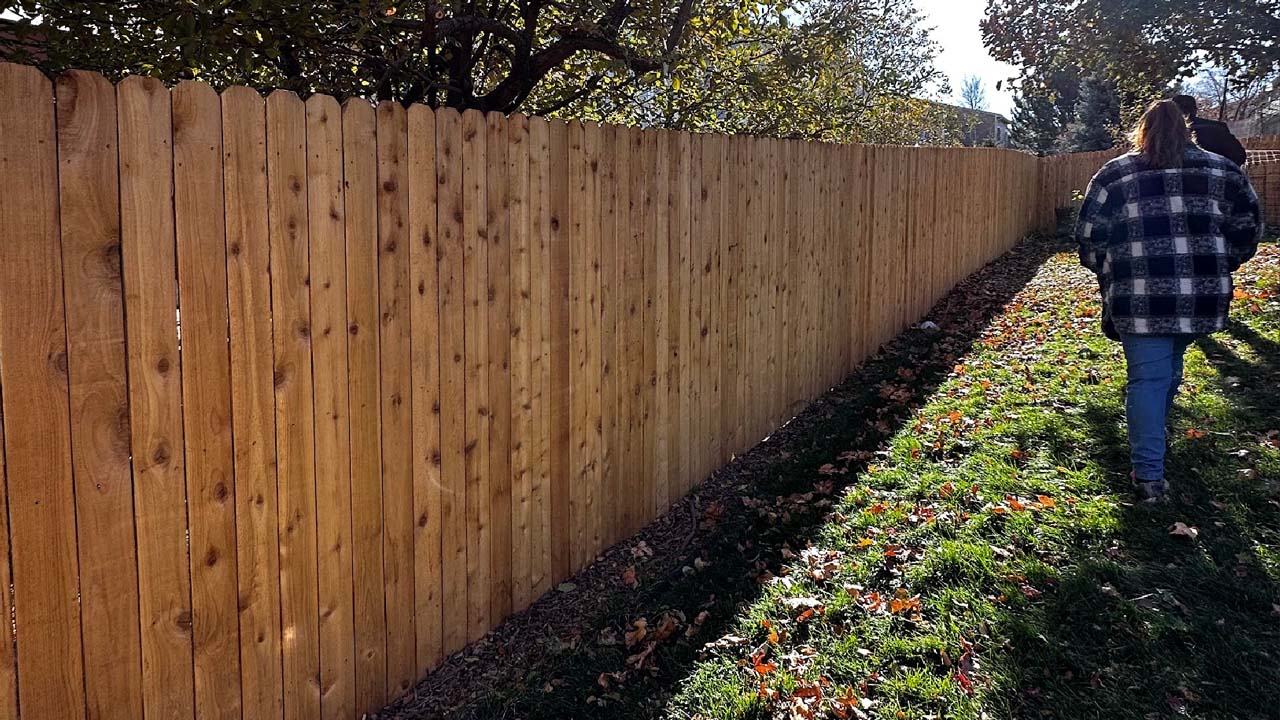
Weatherproofing Your Fence:
Protecting It from the Elements
Fence painting is a critical step in protecting your fence from weather elements like rain, sun, and snow. Using weather-resistant paint or sealants creates a durable barrier that shields your fence from moisture and UV damage, ensuring both long-lasting fence protection and enhanced aesthetics.
Key Elements of Weatherproof Fence Painting:
- Moisture Resistance: Water-repellent coatings prevent wood rot and rust by reducing water absorption.
- UV Resistance: UV-resistant paints combat sun damage, preventing fading, cracking, and deterioration caused by prolonged exposure.
- Sealant Application: A high-quality sealant adds an extra layer of protection, preserving the structural integrity of wood and metal fences.
Tips for Maintaining a Weatherproof Fence:
- Clean the fence regularly with a power washer to remove dirt, mildew, and debris.
- Check for paint chips or worn areas and reapply weather-resistant paint as needed.
- Use a wire brush to remove rust from metal fences before repainting.
Region-Specific Weatherproofing Advice:
- In dry climates: Focus on UV-resistant products to minimize sun-related wear.
- In humid climates: Prioritize moisture barriers to prevent mold, mildew, and rot.
- In snowy or freezing climates: Use weather-resistant paints and sealants that can endure freeze-thaw cycles, preventing cracks and peeling caused by extreme temperature changes.
A properly weatherproofed fence not only withstands harsh environmental conditions but also reduces the need for frequent repairs and maintenance. By using high-quality weather-resistant paint and following a regular upkeep routine, you can significantly extend your fence’s lifespan.
Wood Types for Fence Painting:
Which Fences Work Best?
When it comes to painting fences, knowing the type of wood is key to achieving long-lasting results. Common woods include cedar, pine, and redwood, each with its own traits.
Cedar: Naturally resistant to decay, cedar is ideal for painting. Its smooth surface enhances paint adhesion, making it a popular choice.
Pine: Pine is economical but needs a primer for better adhesion. It’s crucial to seal knots to prevent resin from bleeding through the paint.
Redwood: Highly durable and resistant to weather, redwood offers a rich color and smooth finish. Proper sealing enhances its natural beauty.
Treated vs. Untreated Wood: Treated wood resists insects and rot but may affect paint adhesion. It’s essential to let it dry for a period of time before painting. Untreated wood needs a protective coat to guard against the elements.
Paint and Stain Recommendations: For lasting durability and curb appeal, consider paints or stains with mildew resistance. Eco-friendly options, such as low-VOC paints, ensure sustainability without sacrificing quality.
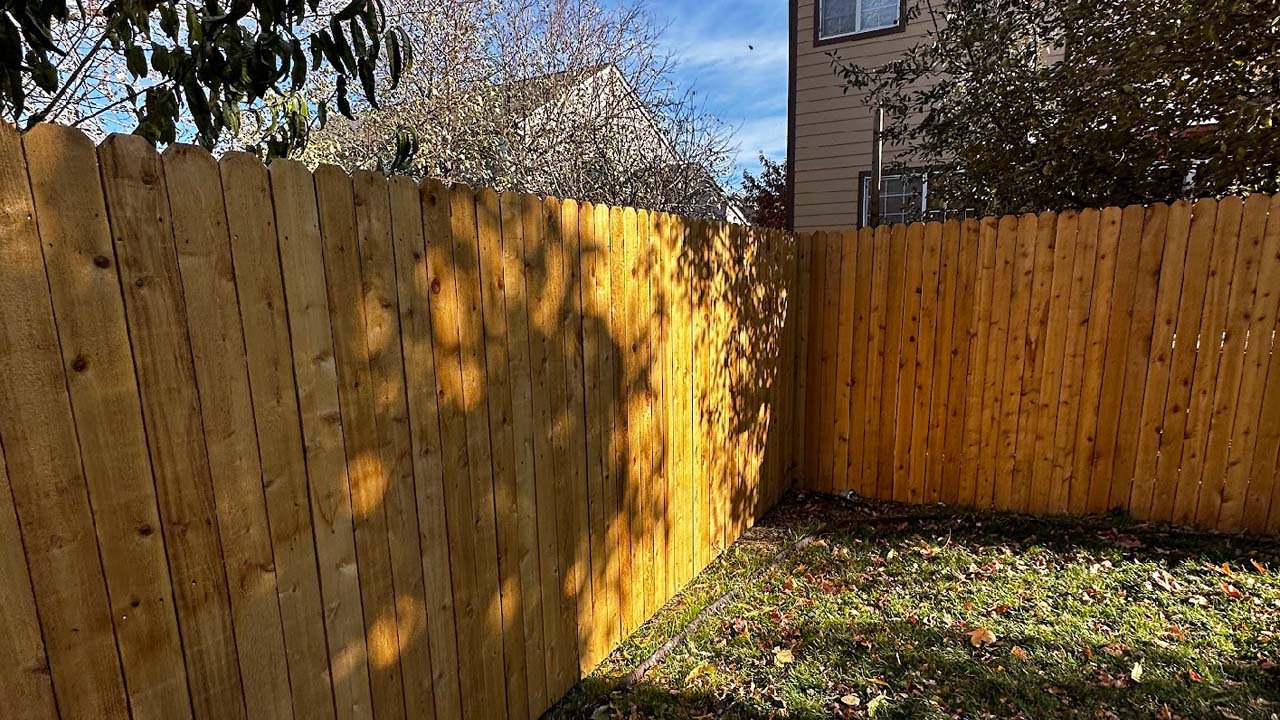
Seasonal Considerations:
The Best Time of Year to Paint Your Fence
Painting your fence at the right time of year is crucial for achieving a long-lasting finish. Weather conditions, such as temperature and humidity, play a significant role in the quality of your fence painting project.
Best Months for Painting:
- Spring (March – May): Ideal in moderate climates. Low humidity and mild temperatures promote good paint adhesion.
- Summer (June – August): Best for areas with dry heat. Avoid peak temperatures to prevent paint from drying too fast and cracking.
- Fall (September – November): Great for cooler climates. Offers stable temperatures and less rain.
Weather Impacts:
- Temperature: Painting should be done between 50°F and 85°F.
- Humidity: High humidity can cause paint to blister. Aim for 40% to 70% for ideal drying.
Unexpected Weather Tips:
- If rain is forecasted, pause your project. Cover your fence to protect it from moisture.
- Use fast-drying paint options to deal with sudden temperature drops.
Lengthy drying periods and poor durability often result from ignoring seasonal factors. Timing your project during the optimal months can enhance the longevity and appearance of your fresh coat. Consider using this guide to ensure breathtaking curb appeal all year long.
A properly weatherproofed fence not only withstands harsh environmental conditions but also reduces the need for frequent repairs and maintenance. By using high-quality weather-resistant paint and following a regular upkeep routine, you can significantly extend your fence’s lifespan.
Painting during mild temperatures ensures better paint adhesion and a smoother application. Extremely hot or cold days should be avoided, as they can cause the paint to dry unevenly or crack. Proper planning guarantees a professional-looking finish that enhances the durability and aesthetics of your fence.
Why Hire Professionals for Fence Painting?
Hiring professionals for fence painting offers significant advantages in quality, efficiency, and long-term results. Professional fence painting services ensure a smooth, even finish that enhances your fence’s appearance and longevity. Experienced painters understand how to address common issues such as peeling paint, uneven surfaces, and weather damage, ensuring your fence is properly prepared and painted to withstand the elements.
Professional painters use advanced tools, techniques, and materials that DIYers often lack, such as high-quality weather-resistant paints, industrial-grade sprayers, and expert sanding equipment.
Their expertise eliminates guesswork and minimizes errors that could lead to costly repairs or rework down the line.
From a cost-benefit perspective, investing in professional fence painting saves time and resources. While DIY painting might seem less expensive initially, it often requires additional supplies, time-consuming preparation, and the risk of mistakes that compromise durability. In contrast, professionals deliver a flawless finish that lasts longer, reducing the need for frequent maintenance.
By choosing experts for your fence painting project, you’ll enjoy peace of mind, knowing the job is done right the first time. The benefits of professional painters go beyond aesthetics—they provide protection, durability, and exceptional results that add value to your property.
Avoid These Common Fence Painting Mistakes
Painting your fence might seem like an easy DIY project, but small mistakes can lead to significant issues like peeling paint, uneven coverage, or a reduced fence lifespan. To ensure a durable and attractive finish, it’s important to avoid these frequent fence painting mistakes.
1. Inadequate Preparation
Proper surface preparation is essential for successful fence painting. Failing to clean the surface can lead to lap marks, poor adhesion, and a finish that doesn’t last. Use a power washer to remove dirt, grime, and loose paint, and follow up with a wire brush to address stubborn areas. Sanding rough spots is also important for a smooth surface. Without these steps, even the best paint won’t adhere properly.
2. Choosing the Wrong Type of Paint
Selecting the wrong paint can lead to peeling, flaking, or increased wear. Wood fences require paint that penetrates the material, while metal fences need rust-resistant, weatherproof coatings. Always use high-quality, outdoor-grade paints designed specifically for your fence material to ensure long-lasting results.
3. Neglecting Weatherproofing
Skipping weatherproofing significantly shortens the lifespan of your fence. Without water-repellent sealants or UV-resistant paints, fences become vulnerable to moisture, sunlight, and temperature changes, leading to issues like rot, rust, and fading. Applying weatherproof coatings is crucial to protecting your fence from these elements.
4. Painting in Poor Weather Conditions
Painting in high humidity, extreme temperatures, or rainy weather can compromise the durability of your project. Paint may dry unevenly or fail to cure properly. To avoid these issues, choose a mild, dry day and follow the manufacturer’s recommendations for ideal painting conditions.
5. Skipping Primer
Primer is essential for ensuring proper paint adhesion and achieving a uniform finish. Skipping this step can result in uneven color and reduced durability, especially on bare wood or previously unpainted surfaces. A high-quality primer helps seal the material, prevents stains or knots from bleeding through, and enhances the longevity of the topcoat. Applying primer ensures your fence is better prepared to withstand environmental wear and tear.
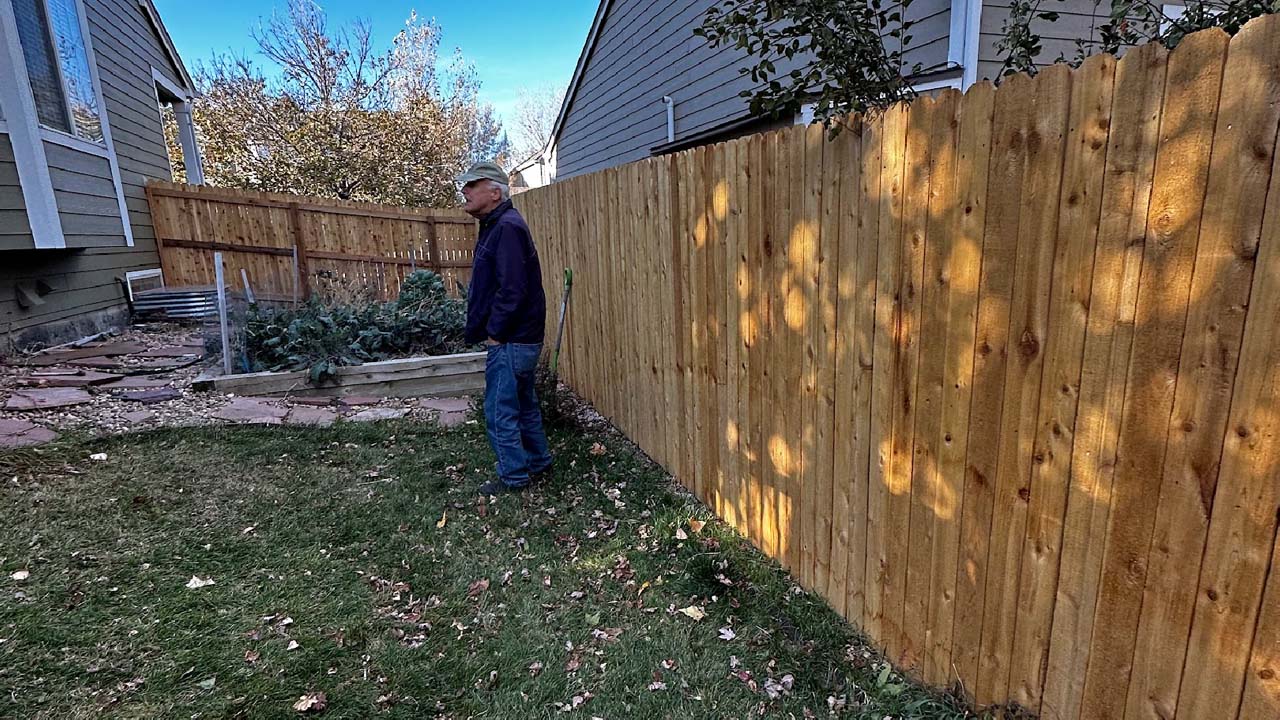
Fence Painting vs. Fence Staining:
What’s the Difference?
When deciding between painting or staining your fence, it’s essential to consider your priorities for aesthetics, durability, and maintenance. Both options have unique advantages, making one more suitable than the other depending on your needs.
Fence Painting
Painting your fence allows for a broader range of color options, making it an excellent choice if you want to match or complement your home’s exterior. It provides a solid barrier against weather elements like rain, sun, and snow, which helps to protect the fence material and extend its lifespan. However, painted fences may require more maintenance, as paint can chip or peel over time, particularly in harsh climates. While painting generally lasts longer than staining, its upfront cost and time commitment are higher.
Fence Staining
Staining a fence enhances the natural beauty of the wood, highlighting its grain and texture. Stains penetrate the wood, offering protection from moisture and UV damage without forming a thick layer on the surface. Stains tend to require less maintenance, as they don’t chip or peel, though they may need reapplication more frequently than paint. Staining is often preferred for preserving the rustic, natural look of wooden fences and can be more cost-effective for ongoing maintenance.
Which Option Is Right for You?
Choose painting if you prefer vibrant, customizable colors and long-lasting coverage. Opt for staining if you want to emphasize the wood’s natural appeal and are willing to reapply more frequently. Both methods require proper preparation and application to ensure durability and weather resistance. Understanding the differences between fence staining vs. painting helps you select the right solution for your fence’s needs.
Eco-Friendly Fence Painting Options for a Greener Home
Choosing eco-friendly paint for your fence can reduce your environmental footprint while beautifying your yard. Many paint brands now offer low-VOC (volatile organic compounds) or water-based formulas. These options are not only safer for the planet but also healthier for those applying and living near the painted fences.
When selecting green paint for fences, consider sustainable painting options like low-VOC products from brands such as Benjamin Moore and Sherwin Williams. These formulas emit fewer toxins, reducing indoor and outdoor air pollution. Water-based paints are another great choice, as they are easier to clean up and less harmful to the environment.
Here are some tips for minimizing environmental impact during your fence painting project:
- Use recycled or sustainable materials like bamboo brushes and roller handles.
- Avoid over-purchasing by calculating the exact amount of paint needed per linear foot.
- Store excess paint properly for future touch-ups instead of discarding it.
Proper disposal of paint cans is crucial. Take unused paint to local recycling centers or hazardous waste disposal sites to ensure safe handling. By opting for eco-friendly products and practices, you contribute to a healthier planet while maintaining the curb appeal of your home.
Fence Painting FAQs: Everything You Need to Know
Contact Elk Horn Painting
for Expert Fence Painting Services
Transform your outdoor space with expert fence painting services from Elk Horn Painting. Our team of professional fence painters is dedicated to delivering exceptional results. We use only quality materials to ensure your fence looks beautiful and lasts for years to come.
Why Choose Elk Horn Painting?
- Over a decade of experience
- Attention to detail
- Use of premium materials like Sherwin Williams
- Local expertise tailored to meet your needs
Whether your fence is made of wood or metal, we have the skills to provide the perfect coat of paint that enhances curb appeal. Our thorough preparation process includes power washing and repairing normal wear to ensure a flawless finish. Trust us to handle every step of the painting process with care and precision.
Get Your Free Estimate Today
For a personalized consultation and a free fence painting estimate, contact Elk Horn Painting at (720) 571-7277. Let us bring your vision to life with our expert services.
Fence Painting Castle Rock
Elk Horn Painting is your trusted local painting contractor, specializing in residential, HOA, and commercial painting projects, including multiplexes and office buildings. Serving Castle Rock, Castle Pines, Lone Tree, Franktown, Elizabeth, Sedalia, Larkspur, and the greater South Metro Denver area, we are Google Guaranteed and 5-star reviewed. Since 2016, our expert painters have delivered top-quality interior painting and exterior painting services for homes, condos, townhouses, apartments, and commercial buildings. Whether you’re looking for “painters near me,” “painting companies near me,” “interior painters near me,” or “commercial painters,” Elk Horn Painting is the clear choice. Schedule your free quote today!
